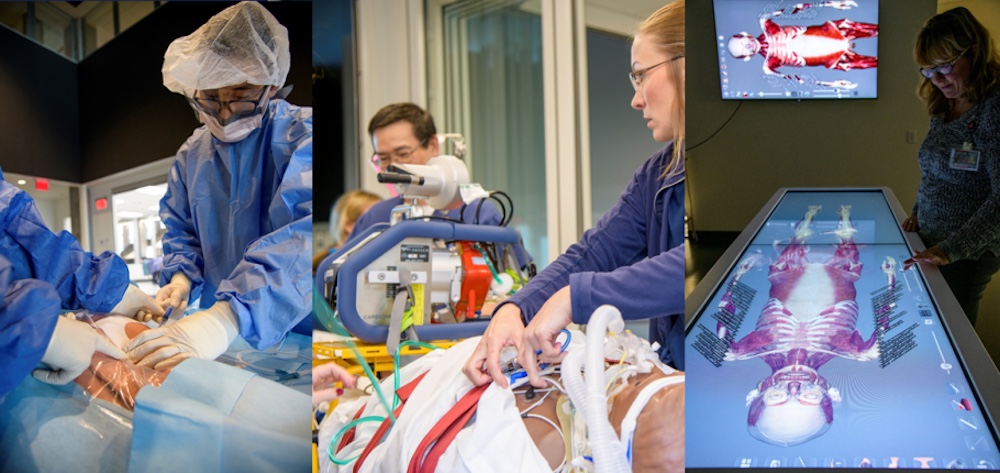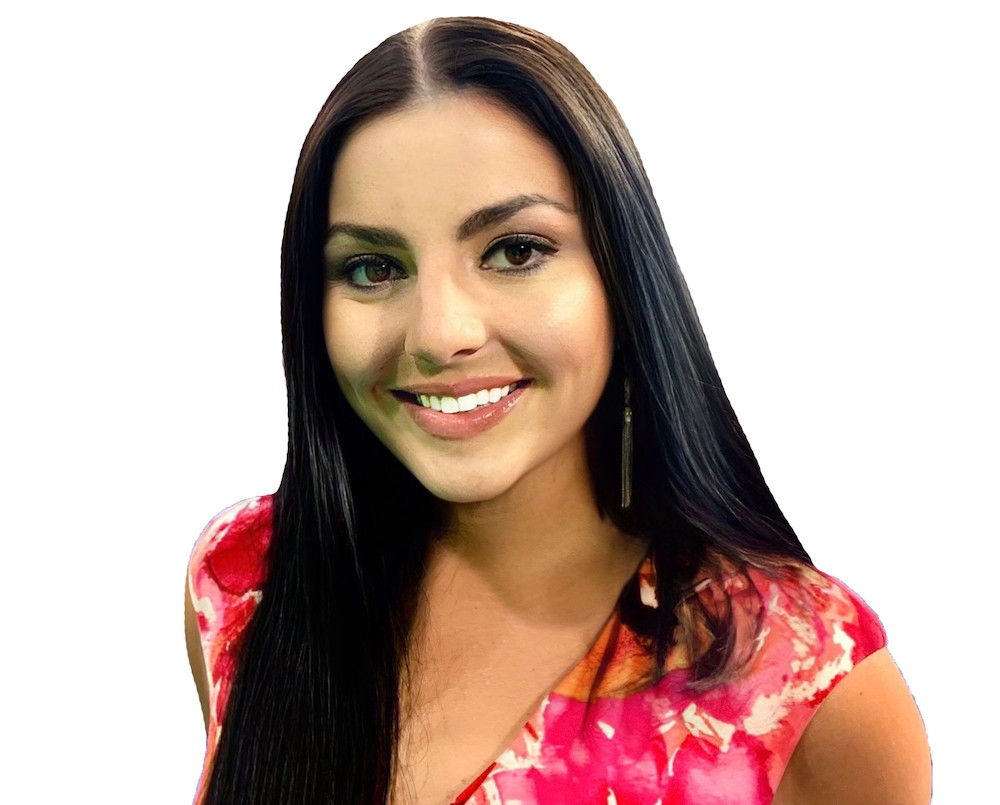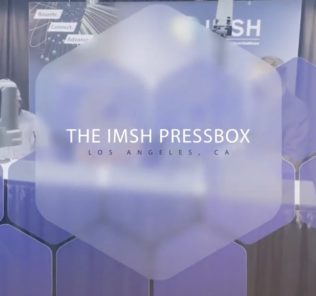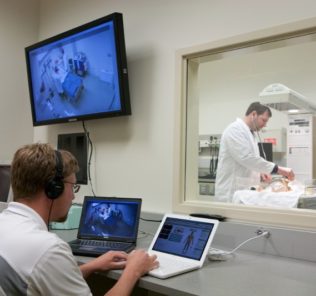ASTEC Facility Supports Innovative Clinical Simulation Needs
Founded in 2004, the Arizona Simulation Technology & Education Center (ASTEC) moved to a new 30,000 sq. ft. facility in 2020, located inside the Health Sciences Innovation Building on the University of Arizona Health Sciences (UAHS) campus. The sim center’s purpose is to provide learners with interprofessional learning opportunities in a high-tech, realistically simulated environment. To achieve this goal, ASTEC engages learners at all levels of healthcare education through high-fidelity simulation technology with innovative methods of experiential learning theory.
A 6,000 sq. ft. Sim Deck is the heart of the facility and includes six patient rooms, three of which can be converted to most types of hospital environments. The remaining three represent an operating room, intensive care unit and labor and delivery suite. The Sim Deck includes a simulated patient restroom, two procedural task trainer rooms, and fully-equipped simulation maintenance and moulage room**.
A thirty-foot wide projector-based virtual environment and a professional sound and light stage are also included in this area. A centralized control room operates the entire floor, including all human patient simulators and the audio-visual controls for the learner management system. Also included on the floor is a 3D immersive anatomy lab, two debriefing rooms and a large, multipurpose classroom.
Sponsored Content:
The remaining areas of ASTEC include a 2,000 sq. ft. innovation workshop and makerspace for simulation technology development. This space is fully equipped with casting and molding technologies, and an array of high-end 3D printers for patient specific anatomic models and rapid prototyping of procedural models for training events. Additionally, ASTEC is equipped with space for virtual, augmented and mixed reality technologies, as well as motion analysis studies and electrical and mechanical engineering needs.
Adjacent to the workshop are separate wet and dry research labs that can be designated for specific research projects, especially those that require greater privacy and/or minimal distractions. These innovation areas complement the greater simulation center’s educational and research mission for use with both internal and external collaborators.
Through collaboration with all four schools within the University of Arizona Health Sciences (nursing, medicine, pharmacy and public health), ASTEC is constantly identifying ways to enhance interprofessional, team-based and leadership skills. This collaboration allows the simulation center to bring together experts in artificial intelligence, engineering and other fields to provide more robust clinical simulation and improve patient outcomes.
We have a facility that’s designed to be incredibly flexible, built like a Hollywood soundstage so I can strike any set,” said Allan Hamilton, MD, FACS, executive director of ASTEC. “The inspiration for that came from working in Hollywood, when I worked on Grey’s Anatomy. We didn’t build an entire hospital around Meredith Grey; we just shot the room.”
Sponsored Content:
From his own experience, Hamilton emphasized that using sets rather than simulated hospitals allows clinical educators to conduct field training. This type of mobility also provides tremendous flexibility based on the learner groups ASTEC decides to work with, and depending on how quick the turnover needs to be. According to Hamilton, another feature that makes ASTEC stand out is that it is a centrally-controlled, state-of-the-art facility.
“Everything is digital. We have our own platform with a gigantic command and control facility, 60 cameras and microphones, not to mention Hollywood-level lighting,” Hamilton said. “With this approach, I can be in a distant facility and interact with a group, which we’ve done across the globe.”
All of this is being done with the future of healthcare simulation in mind. With greater flexibility, ASTEC will be well-positioned to stay up-to-date with immersive learning trends, such as VR goggles and virtual humans.
“We cannot necessarily determine where simulation will go in the future, but we want the facility to be able to house whatever technology is to come,” Hamilton said. “The other thing that makes this facility very different is that the public can see the clinical simulation. The public can walk all the way around the entire facility and see everything we’re doing, because I wanted healthcare to be transparent.”
ASTEC’s New Telesimulation Suite
During the COVID-19 pandemic, one of many things that Hamilton and his team decided to focus on was expanding their telemedicine program. They recognized a specific skill set required for telehealth, so they have chosen to develop an entire skills lab based on telemedicine. Now, ASTEC is in the process of setting up a telehealth SIM Suite.
Then, they plan to bring in standardized patients and start training learners on how to handle certain scenarios. For example, how should they check up on somebody who’s at home waiting for a heart transplant? How do they interact with somebody when there’s a cultural difference or language barrier?
“We will also have the learners interacting with cell phones because a lot of telehealth is going on with a laptop and a cell phone,” Hamilton said. “We really began to understand that telehealth is only going to become more available and is the answer to how we improve access to healthcare, which we know from COVID, is a gigantic hurdle.”
Also during COVID-19, ASTEC went through a massive development of virtual patients in virtual cases because medical and nursing learners were cut off from patient care. To fill this gap, remote training and remote simulation were used to develop the right tools to continue immersive instruction. However, Hamilton stresses that simulation educators must remain aware that the cognitive load for virtual teaching is much, much higher than the instruction would be in person. Remote education also puts a much more significant burden on the facilitator than does live training.
Learn More About ASTEC
Lindsey Nolen is the Content Director for HealthySimulation.com. She is an award-winning journalist with years of experience writing about the many different facets of healthcare, including clinical simulation education and training. She also helped create content for the healthcare career information website, CareersinHealthcare.com.
Sponsored Content:


















